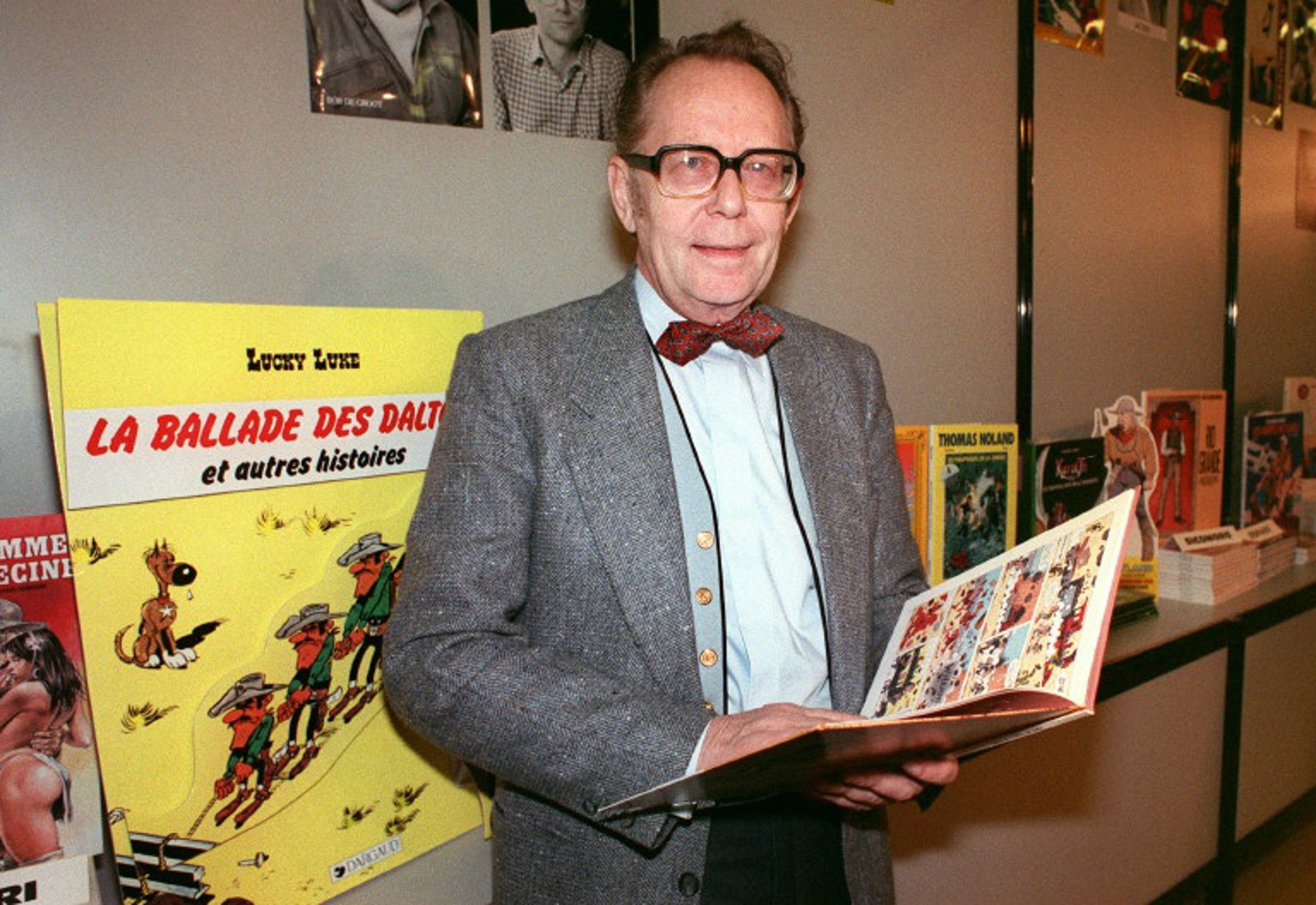The upcoming auction of 50 original Lucky Luke comic book pages is not just a rare event for collectors and enthusiasts but is also a celebration of the enduring legacy and genius of the fictional cowboy’s creator, the Belgian cartoonist Morris.
Set to take place in Paris on 15 November, the Christie's auction offers a unique window into the contribution of the world of comics of Morris – Maurice De Bevere – and the impact of Lucky Luke, the lonesome cowboy "who shoots faster than his shadow."
Morris, who was born in Kortrijk in 1923, was inspired by Walt Disney cartoons as much as European sources, drawing his comic strips in a cinematic style.
Lucky Luke first appeared in 1946 in the magazine Spirou and the first full-length album was published in 1947 – followed by 71 others that Morris produced until he died in 2001, a staggering 55 years. It would become a cultural phenomenon, translated into many languages, spawning animated adaptations, video games, live-action movies (with Jean Dujardin and Terence Hill portraying the cowboy in different decades), and even featuring in Belgium’s passports.
Morris' genius lay not just in his technical skills as an illustrator but also in his storytelling. Infused with humour, irony and subtle political commentary, Lucky Luke subverted the traditional Western genre at a time when Hollywood was romanticising it with macho, gun-slinging heroes.
Working with writers like René Goscinny of Asterix fame, Morris' ability to balance visual gags with clever dialogue made the stories universally appealing. His love for detail is evident in his accurate depictions of everything from saloon architecture to period-appropriate clothing. Yet, despite this realism, his exaggerated caricatures kept the tone light and accessible, making the stories enjoyable for readers of all ages.

La Mine d'or de Dick Digger, Planche 46, €60,000-€80,000 (Left) and Phil Defer, Planche 8, €70,000-€90,000 (Right).
The auction, preceded by public viewings in Brussels, Geneva and Paris, is the high point of the celebrations marking Morris' centenary. "Anyone interested in comic strips should see original artwork," says Christie's books and manuscripts expert Vincent Belloy. "You can't understand, what kind of draughtsman Morris was just by looking at the printed version."
Each page is estimated to sell for between €20,000 to €70,000 for up to €3.4 million. Few such pages have ever been seen, and no Morris work has even been sold at auction, so the Paris sale will be a world premiere.
One sheet expected to sell well is the final page of from 1954 album Hors-la-loi, the first to feature Lucky Luke's arch enemies, the Dalton brothers. Based on the real-life Dalton outlaws, they are killed off, with the last panel showing their graves. However, they proved so popular that Goscinny, convinced Morris to revive them – not as the original dead brothers, but as the almost identical (and fictional) Dalton cousins.
Related News
- 30 things I’ve learned about Belgium in 30 years
- How Belgian are you? Take our National Day quiz to find out
- Brussels recognises comic strips as intangible cultural heritage
Morris did not have any children and mostly kept all his art, which eventually ended up with his great nephews, who authorised the sale, with Christie's helping to choose the 50 sheets. "We tried to select ones which would bring back the strongest memory among collectors," Belloy says.
Belloy puts Lucky Luke in the pantheon of great comic strip characters, alongside Tintin and Asterix. He notes Morris' hand-drawn artistry and the painstaking work that went into creating each frame. “His main goal was not to fill it with details, but to have movement. When you study his life and his career, you see that if he didn't end up drawing comics, he would have worked in animation,” Belloy says.
He says the original drafts are a rare glimpse into Morris' creative process. "When you see the way he moves the focus, it is like moving a camera: he is leading you where he wants and you don't even notice it. It's simple, but it's maximum efficiency," Belloy says.

